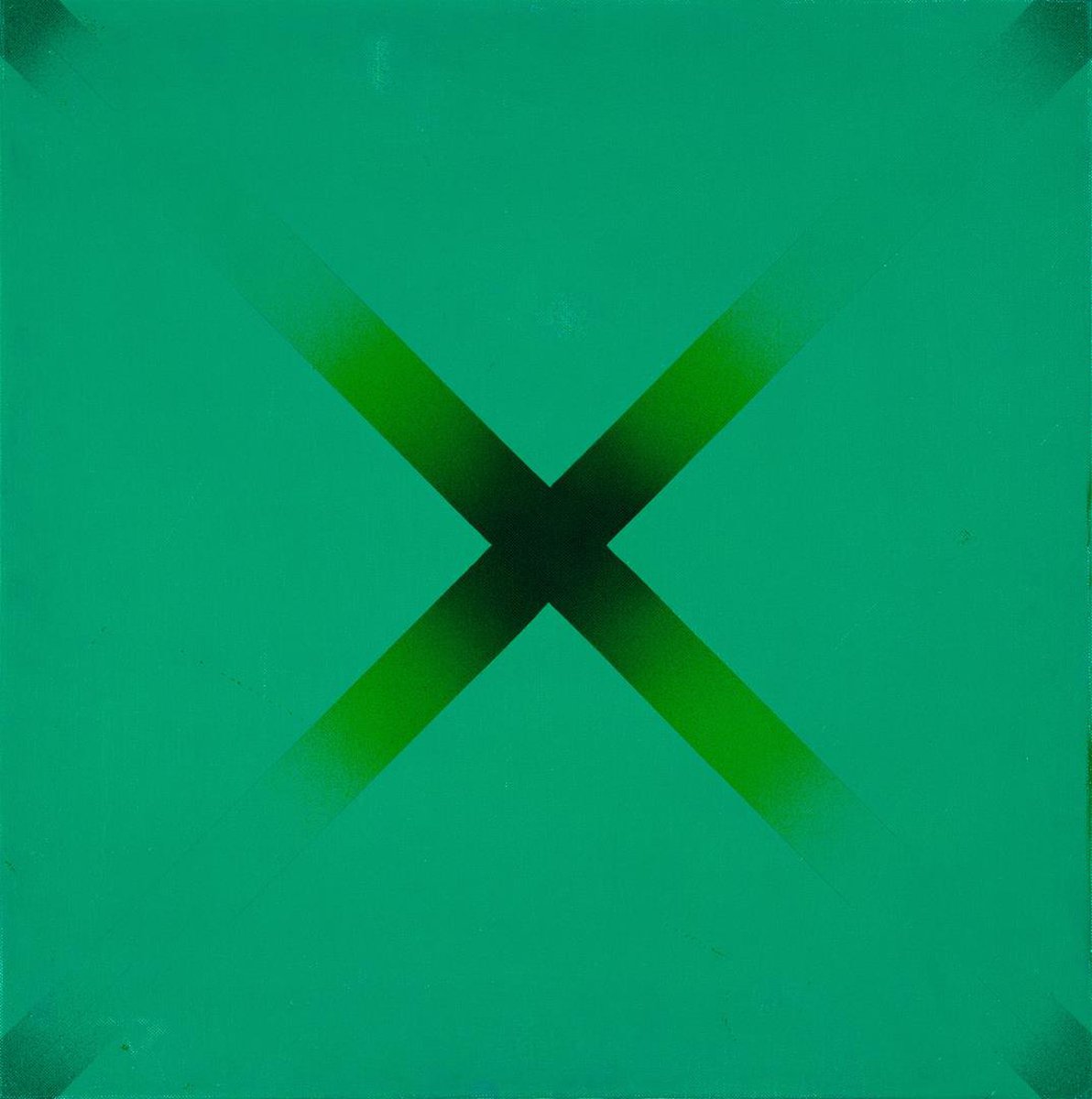The painting Untitled, 1973, by Fernando Calhau is Collection Caixa Geral de Depósitos’ current highlight as it is on loan to the exhibition #Slow #Stop... #Think #Move – Cycle Território #2 –, curated by Ana Anacleto. The show, produced by Culturgest, is open at Fidelidade Arte, Lisbon, until 5 May 2023.
Fernando Calhau graduated in Painting at Escola Superior de Belas Arte, Lisbon, in 1973. The following year, he studied engraving at the Slade School of Fine Art, London, with Bartolomeu Cid dos Santos, on a grant from the Calouste Gulbenkian Foundation. His work progressed in cohesive series that spanned over lengthy periods of time. His first major artistic production, which includes this painting that has belonged to Collection Caixa Geral de Depósitos since 1986, happened between 1972 and 1975. The series, characterized by the colour green, was created in three different dimensions: 145 x 145 cm, 110 x 100 cm and 55 x 55 cm. According to Nuno Faria, “the paintings are monochromatic surfaces traversed by cross-shaped luminous notes of colour, an enclosure of sorts of the image field.” (Convocação I and II, Calouste Gulbenkian Foundation, 2006, p.259). Delfim Sardo adds: “These are, thus, very simple paintings, made with huge technical mastery, that unveil Fernando Calhau's passion for the minimal, eliminating all manual traces so as to create a smooth, even look.” (Open the Box, Culturgest – Foundation Caixa Geral de Depósitos, Lisbon, 2009, p.62).
Yet, it is the artist's own words that best reveal his intentions: “To my mind, I began to be swayed by the minimal in the 70s -- the green paintings series. It was at that time that I became aware of my affiliations.” (Work in progress, Calouste Gulbenkian Foundation, 2001, p.57). In that same exchange with Delfim Sardo, the artist adds: “I know that I fancied the colour green, I never understood why.” (idem, p.73); “It was important to me that there would be no physical trace of a brushstroke, chiefly because the backgrounds were, in fact, painted with a brush and not with a spray gun, yet they were painted with very thin layers of paint so that a brushstoke would never become apparent.” (idem, p.83).
Ernesto de Sousa's words still echo in the memory of Fernando Calhau's singular work: “Silence, indifference, emptiness... nothing. The white page, the monochrome painting. (...) From very early on, Calhau's green and empty paintings, enclosed in impossible, and somewhat playful frames, go beyond Goya’s abysmal filth of nothingness, a simple and youthful refusal to accept the game of false and tasteless aptitudes; the face of a less metaphysical and virtuous emptiness, but nonetheless authentic: this domestic emptiness of ours. The colour green, anyway, like the fields, and still rural and lyrical, filled with freshness and spring.” (Colóquio-Artes, nº 27, 1976, p.38).
Parallel to his artistic career, Fernando Calhau played a very important role in the dissemination of Contemporary Art. He was consultant to the Caixa Geral de Depósitos Board for the acquisition of works of art, between 1992 and 1997. His long career at the Secretaria de Estado da Cultura [Department for Culture], having created the Institute of Contemporary Art in 1997, which he headed until 2000, gives testimony to his unique qualilifications in the Portuguese cultural scene.
Hugo Dinis


